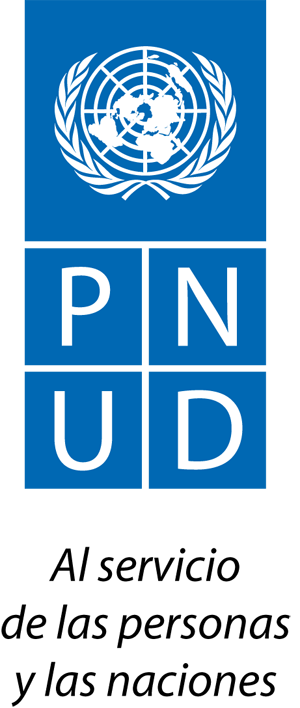
Goal 2: Zero hunger
End hunger, achieve food security and improved nutrition and promote sustainable agriculture
Rapid economic growth and increased agricultural productivity over the past two decades has seen the proportion of undernourished people drop by almost half.
Many developing countries that used to suffer from famine and hunger can now meet the nutritional needs of the most vulnerable. Central and East Asia, Latin America and the Caribbean have all made huge progress in eradicating extreme hunger.
These are all significant achievements in reaching the targets set out by the first Millennium Development Goals. Unfortunately, extreme hunger and malnutrition remain a huge barrier to development in many countries. 795 million people are estimated to be chronically undernourished as of 2014, often as a direct consequence of environmental degradation, drought and loss of biodiversity. Over 90 million children under the age of five are dangerously underweight. And one person in every four still goes hungry in Africa.
The Sustainable Development Goals (SDGs) aim to end all forms of hunger and malnutrition by 2030, making sure all people – especially children and the more vulnerable – have access to sufficient and nutritious food all year round. This involves promoting sustainable agricultural practices: improving the livelihoods and capacities of small scale famers, allowing equal access to land, technology and markets. It also requires international cooperation to ensure investment in infrastructure and technology to improve agricultural productivity.
Together with the other goals set out here, we can end hunger by 2030.
Zero Hunger is one of 17 Global Goals that make up the 2030 Agenda for Sustainable Development. An integrated approach is crucial for progress across the multiple goals.
Learn more about the targets for Goal 2.
- By 2030, end hunger and ensure access by all people, in particular the poor and people in vulnerable situations, including infants, to safe, nutritious and sufficient food all year round
- By 2030, end all forms of malnutrition, including achieving, by 2025, the internationally agreed targets on stunting and wasting in children under 5 years of age, and address the nutritional needs of adolescent girls, pregnant and lactating women and older persons
- By 2030, double the agricultural productivity and incomes of small-scale food producers, in particular women, indigenous peoples, family farmers, pastoralists and fishers, including through secure and equal access to land, other productive resources and inputs, knowledge, financial services, markets and opportunities for value addition and non-farm employment
- By 2030, ensure sustainable food production systems and implement resilient agricultural practices that increase productivity and production, that help maintain ecosystems, that strengthen capacity for adaptation to climate change, extreme weather, drought, flooding and other disasters and that progressively improve land and soil quality
- By 2020, maintain the genetic diversity of seeds, cultivated plants and farmed and domesticated animals and their related wild species, including through soundly managed and diversified seed and plant banks at the national, regional and international levels, and promote access to and fair and equitable sharing of benefits arising from the utilization of genetic resources and associated traditional knowledge, as internationally agreed
- Increase investment, including through enhanced international cooperation, in rural infrastructure, agricultural research and extension services, technology development and plant and livestock gene banks in order to enhance agricultural productive capacity in developing countries, in particular least developed countries
- Correct and prevent trade restrictions and distortions in world agricultural markets, including through the parallel elimination of all forms of agricultural export subsidies and all export measures with equivalent effect, in accordance with the mandate of the Doha Development Round
- Adopt measures to ensure the proper functioning of food commodity markets and their derivatives and facilitate timely access to market information, including on food reserves, in order to help limit extreme food price volatility
The SDG Fund response
Underlying the food and nutrition situation are multiple challenges in achieving sustainable food production. A rapidly growing population is increasing the demand for food. The SDG Fund programmes apply a multisectoral approach and include the following key dimensions:
- Promotion of integrated approaches for alleviating child hunger and under-nutrition
- Promotion of sustainable and resilient livelihoods for vulnerable households, especially in the context of adaptation to climate change
- Strengthening of capacities to generate information allowing for improved policy-making and advocacy.
For example:
- In Ecuador’s Imbabura region, the SDG Fund joint programme is putting into practice an integrated approach to tackle some of the most pressing challenges in the country: building income opportunities for the small farmer-owned production units, overhauling the country’s local food production for better access to safe, affordable and nutritious food and fighting malnutrition and anemia.
- El Salvador’s government is developing new plans and regulations to tackle food security and nutrition among the most vulnerable. By reconsidering the role of women, the programme is increasing access to health services and promoting women-owned micro-businesses to reduce the high rates of under nutrition and obesity.
- In Sri Lanka, the joint programme is addressing food insecurity by closely aligning with national policies and using surveys to improve the efficiency and effectiveness of the investment on food security and nutrition. With the support of the National Nutrition Council, the programme is working with the government to take well-informed decisions on targeting the appropriate recipients and in promoting micronutrient rich foods. The programme is working to empower women and to influence behavior changes in children.
- In Viet Nam, the SDG Fund joint programme operates in 2 provinces with extremely high poverty rates. It focuses on nutrition policies and standards, development of institutional capacity and systems, and evidence generation.

